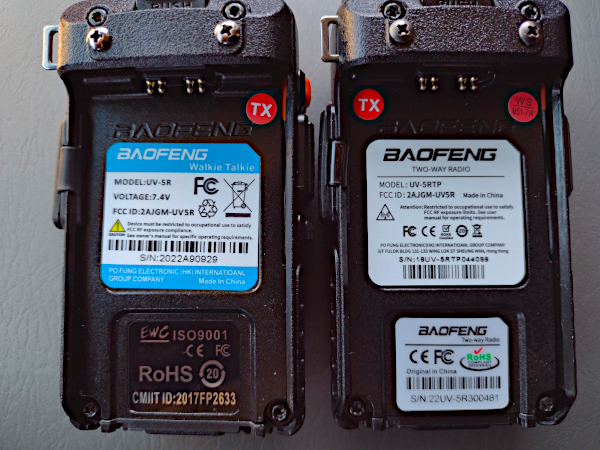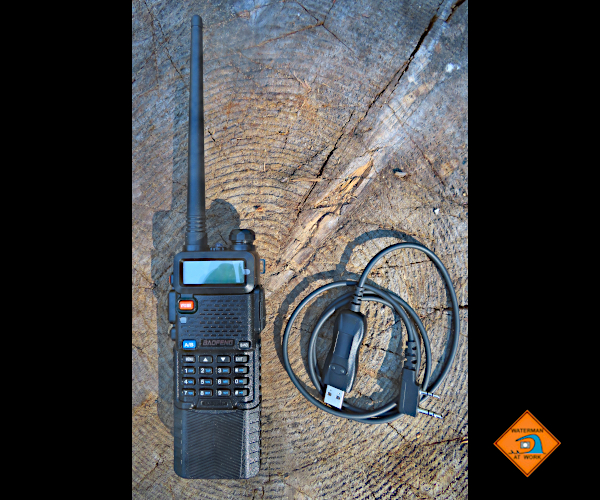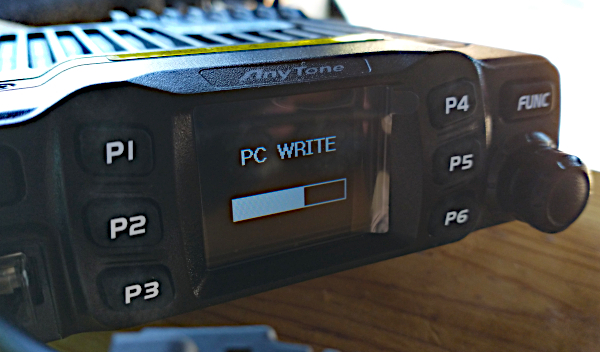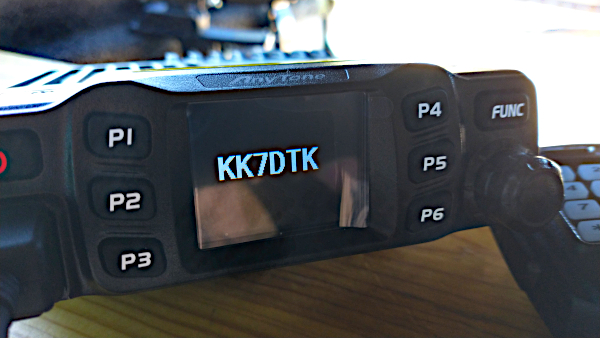This post will show how to get started with ham radio the cheap and easy way. Why should you listen to me? Because there is nothing for sale and there are no ads. I have no affiliation with any of the companies mentioned here. I purchased all the items just like you would. My years of radio experience ranges from crystal sets to military aviation electronic communications. There are plenty of experts who can provide more details, this is just to get you going in simple terms.
Amateur Radio License
First, you need to get an Amateur Radio License. Most common is the Technician class license. It gives you access to Amateur Radio frequencies above thirty megahertz, including the popular VHF/UHF bands.
Register with the FCC CORES system and get an FCC Registration Number. This costs $35.
Find a place to take the written exam. ARRL.org has the search tools to do this. Look for a local ham club and ask them if know where you can go. I got my license at a “Hamfest”, a local ham radio convention. There are online exams if there are no tests near you. Once you make a test appointment, you need to study the practice exams. You can find the practice exams at ARRL.org as well. You need to learn Ohm’s Law: V=IR. After seeing the questions over and over on the parctice exams, you’ll memorize enough of them to pass the exam.
On the day of the test, here’s everything you need. No electronic devices or cheat sheets. You need to answer 26 of the 35 questions correctly in order to pass the test. There is an admin fee of $15 or less. If you pass the exam, you’re issued a call sign in a few days, and you are a ham radio Technician.
Entry Level Radio
You paid your $50 for the ham radio license fee, now you need a radio. Most of the action for an Amateur Radio Tehnician is on VHF/UHF 2m/70cm bands so you want a dual band radio that operates at these frequencies. The good news is that the radio will cost much less than the licensing fees.
You may have been checking out the Baofeng UV-5R, or one of the many variants, because it is about the cheapest dual band VHF/UHF radio you can buy. For about $25USD, you can’t go wrong, but….

Buying a Baofeng radio is a crap shoot like no other. You will see reports of “fake” Baofengs, but it’s more like of ton of vendors selling slightly different versions as the specifications remained the same for all. The radio in the photo above, the UV-5TP, is the “high power” 8w version of the UV-5R. It may or may not be higher power, but the FM radio chip is not there like on the lower priced UV-5R. No FM radio. The FM chip was either left off or removed to save money.
In the photo below, a Baofeng UV-5R is on the left and a Baofeng UV-5RTP is on the right. Not much similarity in the stickers on the backs of the radios, factory stickers may be underneath them. Notice the UV-5RTP on the right has two serial numbers.

The stock antenna on the UV-5R is pretty weak, that’s where most users look to boost performance. There may or may not be counterfeit UV-5R radios, but there are counterfeit UV-5R antennas for sure. How do you tell the fakes from the genuine?

In the photo above, on the bottom is a Nagoya NA 24J dual band antenna. Nagoya is well regarded for their antennas but they are the most counterfeited. On top is an ABBREE CS Tactical antenna. Both of these companies claim to be offically affiliated with Baofeng in some way and the packaging, from two completely different companies, is nearly identical. Higher price doesn’t necessarily higher performance. In initial testing, the ABBREE outperformed the much higher priced Nagoya. Real? Fake? With Baofeng, you never know.
Buying a Baofeng is a good idea. You’ll learn ham radio basics and be able to connect to local repeaters. For the price, you can’t complain although some people certainly do. You get what you pay for, that’s true here. This is not a radio you are going to stake your life on. Buy a Baofeng but realize there is no warranty and no customer service. If your radio dies after the return period, about thirty days, you lost $25. Buy another one. That’s all she wrote.
When you buy a Baofeng, get the programming cable with it. Once again, beware of the tons of low quality Baofeng programming cables sold for dirt cheap prices. Get a cable with the FTDI chip.

$50 licensing fees plus $50 for a Baofeng UV-5R and programming cable and you are ready to transmit as a ham radio operator. You will be doing a little talking at this point, but you’ll be doing a lot more learning.
Mobile Radio
I live in a remote area and travel to remote areas. Repeaters are a long way off, much farther than than a 5w handheld radio can reach. I don’t really have the facilities for a home base station so I purchased an Anytone AT-778UV, which is a 25w transceiver that operates on 12v DC power. It can be run in a vehicle from the 12v power port, off a solar power system like I have, or at home with a 120vAC/12vDC power supply. Paired with the Nagoya UT-72 magnetic base ground plane antenna on the roof of my truck, it can transmit and recieve over twenty miles. You can do more with a mobile unit with different antennas to improve performance.

The AT-778UV is easy to program channels and radio settings with CHIRP. CHIRP is free and easy to learn and use.


I can program the Anytone AT-778UV and the Baofeng UV-5R radios with CHIRP on my Windows 10 laptop and my Asus Chromebook. On the Chromebook, CHIRP is run in a Linux environment.
So, for about $100USD, you can become a ham radio operator with a Baofeng UV-5R, or for about $200, you can be on the air with the Anytone AT-778UV. That’s pretty inexpensive to get into the world of radio communications.

It certainly looks like tough times ahead, a good radio is something you will want. In any crisis, communication is critical. Cell phones, internet, satellites and electricity can be turned off. Radio can not.
Remember that I am not affiliated in any way with the products and services mentioned in this post. I’m buying the stuff just like you. Check back soon for more ham radio information and projects.

Nice write up. I appreciate the effort and the help!
Have fun.
KK7DTK